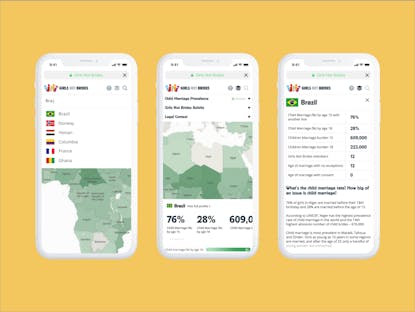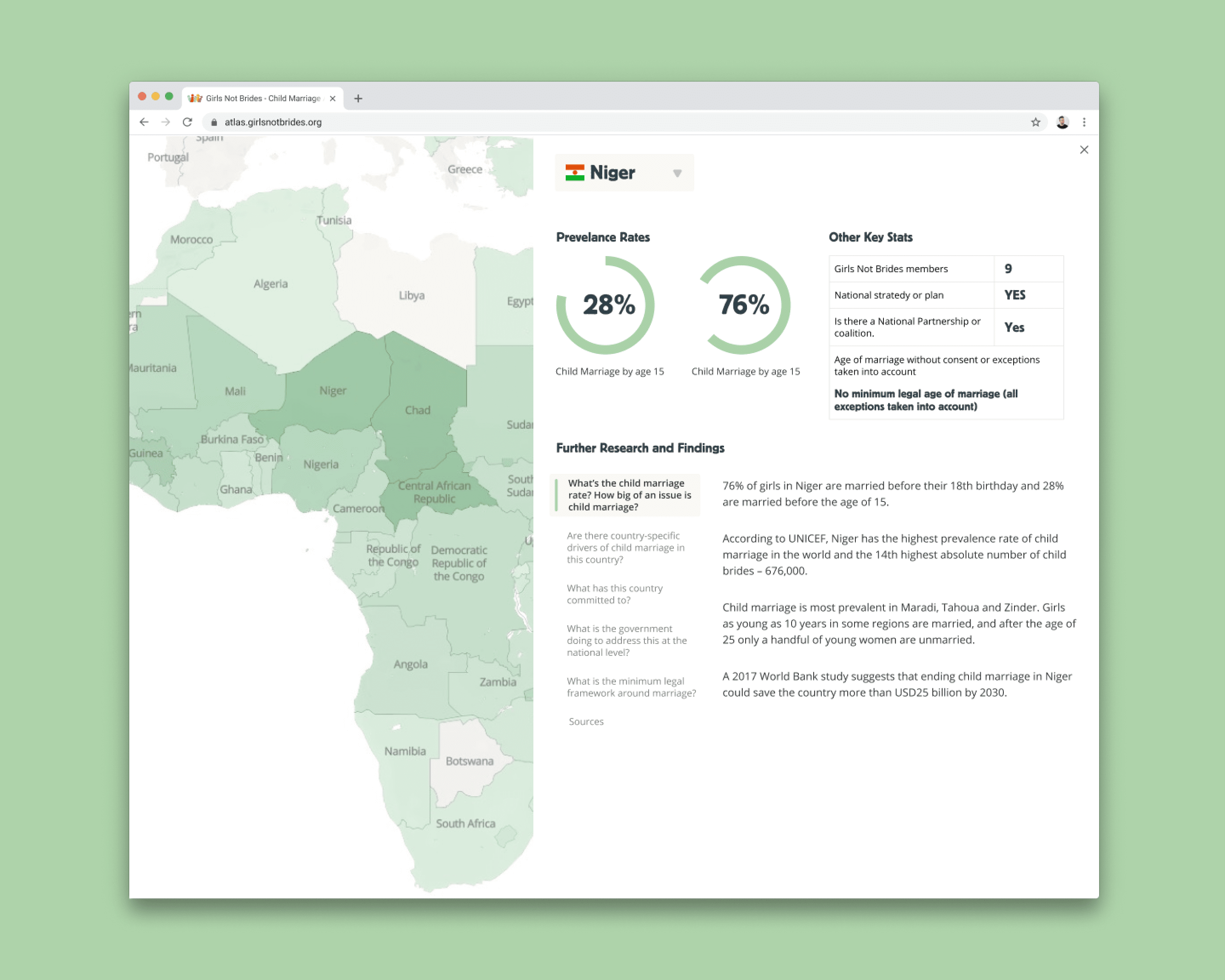Building tools to help Girls Not Brides better communicate the impact of child marriage around the world.
It’s always a good day when one of your most respected clients, Girls Not Brides, gets in touch and asks for help with rethinking one of their important comms products.
Girls Not Brides is a global partnership of more than 1000 civil society organisations from over 95 countries committed to ending child marriage and enabling girls to fulfil their potential.
The team recently reached out to us asking for help on how to make better use of the recently published child marriage prevalence data released through the UNICEF State of the World’s Children Report.
Until now, datasets have been displayed through the Girls Not Brides website, mainly via their “Where does it happen” page. It’s one of the website’s highest performing pages and is a vital tool in helping policies makers, journalists, UN agencies and Girls Not Brides members understand where child marriage is most prevalent. Girls Not Brides add a huge amount of extra value to this data, compiling additional facts and pulling together detailed case studies for over 150 countries in the form of their “Country Profiles”. It provides users with a one-stop shop for specific country and regional information relating to the issues surrounding child marriage.
- Client:
- Girls Not Brides
- Completion:
- Feb 2019
- Project URL:
- girlsnotbrides.org

The Objective
With a newly released dataset, the team were interested to see if we could help them further iterate upon the existing “Where does it happen” page with something a little more engaging, which encouraged users to explore different types of data and draw comparisons between countries while being able to search for detailed country information quickly.
Workshop
We kicked the project off by inviting core members of the team, including senior members and the communications director to a day-long workshop. We structured the day using techniques from the popular Design Sprint to understand the problems the existing product had, and what the future roadmap looked like going forward. We voted on the biggest issues to tackle and possible solutions using a Lightning Decision Jam and then outlined a list of who the target users were.

The Atlas
After prototyping a range of ideas on how best to structure and present the information, we decided upon a map visualisation where users would be presented with a simple, at a glance view, of where child marriage happens around the world, with easy access to more detailed, country-level information.
Creating a map which would be usable on handheld devices as well as the desktop was a challenge, but we managed to find a way to make it work. We integrated the product into the core website, allowing the admin team to maintain all aspects of their site centrally.
When the product was a little more developed, we conducted user tests with key target user groups and evaluated the results, which validated our design decisions or informed the next set of iterations.
During these sessions, we gathered a huge amount of additional insights — for example, our initial design featured a search box over the top of the map right in the centre of the screen. 3/5 testers didn’t see the search box when asked to search for a country, they assumed it was in the sidebar with the rest of the controls.
We’re delighted with the work we’ve done on this project, and it’s been a pleasure working with the team at Girls Not Brides again. As with any product of this nature, it’s never really done, and we’ll continue to learn and refine the product over 2019 and beyond. You can visit the Atlas here.